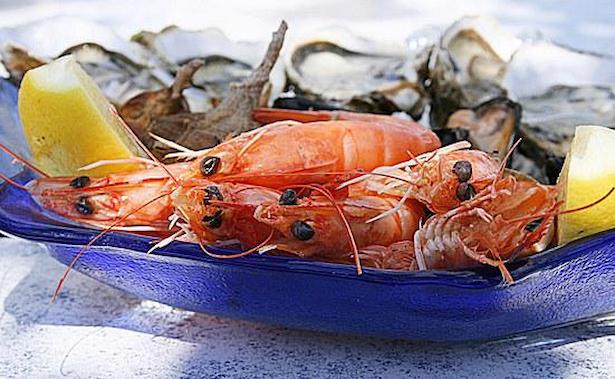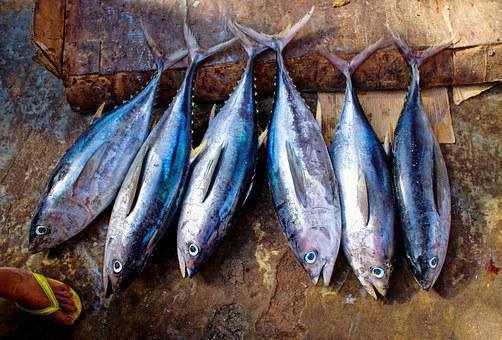
If you want to prevent foodborne illness, handling seafood safely is crucial. By adhering to a few basic food safety guidelines, you can lower your risk of getting food poisoning and all its unpleasant symptoms.
Should Seafood Be Kept Chilled?
Seafood must be refrigerated if you intend to store it for a long period of time because the USDA advises against leaving perishable food out of the refrigerator for longer than two hours. Seafood can be kept fresh for up to two days in the refrigerator, whereas it becomes unsafe to consume it without refrigeration after the previously mentioned two hours.
When Left Outside At Room Temperature, How Long Is Seafood Safe?
As we’ve already mentioned, the USDA has safety regulations that state perishable food can only be left out for two hours before it becomes unsafe to consume, and this includes seafood. Therefore, seafood should only be left out at room temperature for two hours.
Given that bacteria multiply incredibly quickly between 40°F and 140°F, it is not unlikely that the seafood will be unsafe to consume after that period of time.
Can You Leave Seafood Outside Overnight?
Since the USDA states that no perishable food, including seafood, should be left out of the refrigerator for longer than two hours, seafood cannot be left out overnight. Additionally, even though seafood can typically last a little longer, leaving it out overnight is simply too much.
When Should Raw Seafood Be Refrigerated?
Any perishable food left out for longer than two hours is unsafe to eat, according to the USDA. The maximum amount of time raw seafood can be exposed to the elements is two hours. After two hours without refrigeration, the seafood might be unsafe to eat because bacteria multiply incredibly quickly at room temperature.
How Long Can Frozen Seafood Be Left Outside?
The previously mentioned safety recommendations by the USDA make no mention of freezing food, despite the common belief that doing so makes food generally more sustainable. Therefore, for completely safe eating, frozen seafood should only be left out for two hours.

How Long Is Cooked Seafood Good For Sitting Out?
To be absolutely certain that it’s safe to eat, cooked seafood should not be left out for longer than two hours, according to the USDA. This is due to the fact that bacteria multiply quickly at room temperature, which causes perishable foods like seafood to spoil even quickly after being left out of the refrigerator.
How Long Is The Shelf Life Of Seafood Gumbo?
According to the USDA, seafood gumbo is classified as perishable food and should not be left out of the refrigerator for longer than two hours. As a result, seafood gumbo should only be left out for two hours before eating.
How Long Is The Shelf Life Of Seafood Pasta?
Similar to other perishable foods, seafood pasta doesn’t keep well outside of the refrigerator. The USDA claims that seafood pasta can only be left out for two hours before it becomes unsafe to consume because bacteria multiply very quickly at room temperature.
How Long Can Seafood Be Left In A Car?
Under no circumstances should seafood be left out in a car for longer than two hours. According to the USDA, the “Danger Zone” for perishable food is between 40°F and 140°F, which means that many types of food can spoil even at room temperature in just two hours.
Additionally, you should never leave your seafood in a car for an extended period of time if you want to ensure that eating it won’t harm you because the temperature in a car is typically higher than room temperature.
How Can You Tell If Seafood Is Bad?
Unfortunately, there’s an easy way to ensure your seafood is still good. Eating bad seafood may have some pretty unpleasant consequences, as we explain in a few paragraphs below. If you want to know if seafood is bad, give it a good sniff; if you detect any strange, sour, ammonia-like aromas, toss it.
How Is Seafood Kept Fresh?
While placing seafood in the refrigerator is sufficient to prevent it from spoiling right away, it is insufficient to ensure that it remains in genuinely good condition. Seafood needs to be placed in airtight containers first, and then immediately into the refrigerator, to maintain its freshness.
What Happens If You Consume Poor Seafood?
Eating bad seafood will almost certainly make you ill, just like pretty much any other food. food poisoned. That means the likelihood that you will vomit or experience stomach pain after eating poor seafood is high.
Quick Tips For Eating Fish Safely
- Seafood should be kept separate from cooked seafood in storage.
- Before handling fish, always wash your hands with soap and warm water.
- Before preparing other raw ingredients, wash utensils, cutting boards, countertops, and plates with hot water and soap.
Other Commonly Asked Questions
How Long Does Fish Stay Frozen?
Fish that has been frozen will still be safe to eat for three to six months, but the texture and flavor will deteriorate over time. In comparison to oily fish like salmon, mackerel, and trout, raw lean fish like tilapia and hake keep better in the freezer. When cooked fish is frozen, it typically only lasts for one month before the texture becomes soggy and unpleasant to eat.
Can Fish That Has Been Thawed Be Frozen Again?
If the fish was defrosted in the refrigerator and wasn’t kept there for more than two days, it can be frozen again after it has thawed.
How Long Does Smoked Fish Remain Fresh At Room Temperature?
Smoked fish can be stored at room temperature for up to three hours without losing any of its nutritional value, according to the USDA. This is so that the fish can be preserved during the smoking process.
Summary
When food is left out of the refrigerator, it spoils quickly, just like pretty much every other type of perishable food available. Seafood shouldn’t be left out for longer than two hours if you want to be absolutely certain that it is safe to eat.
According to the USDA, temperatures between 40 and 140 degrees Fahrenheit are the “Danger Zone” for food because bacteria there grow quickly, making foods like seafood unsafe to eat even after the previously mentioned two hours.
